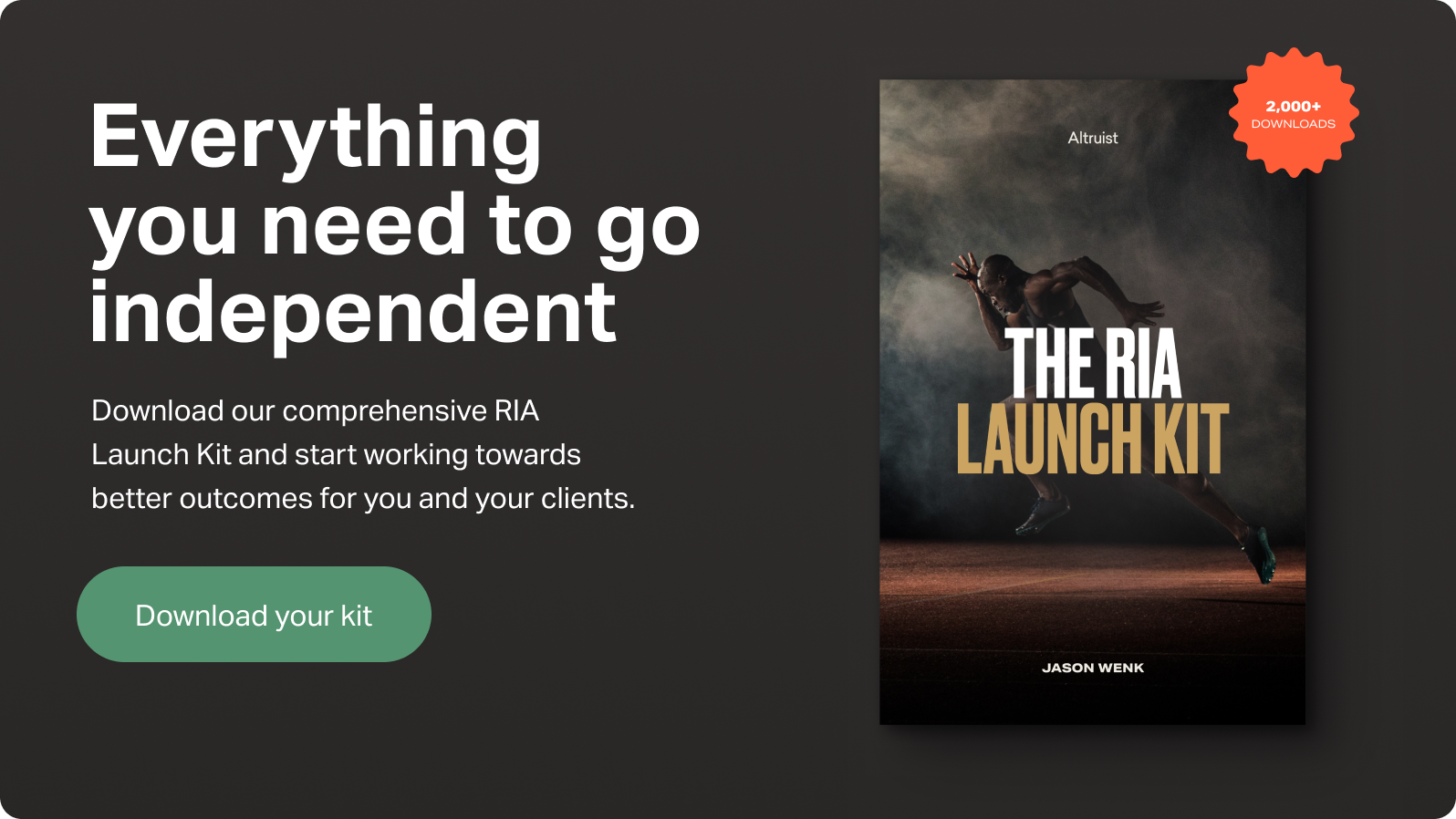Forming your own RIA requires a hefty amount of legwork. We called in two leading experts — Dasarte Yarnway, Founder & Managing Director of Berknell Financial Group, and Brittney Castro, CFP, Founder & CEO of Financial Wise, Inc. — to help answer the most important questions when it comes to building your RIA from the ground up.
Q: Compliance can be scary. Where should advisors start if they’re thinking of establishing their own RIA?
A: For solo practitioners, read and research as much as possible. If you’re moving from a larger wirehouse into your own RIA, lean on your training and experiences with your internal compliance department. You can get a feel for what requires a disclosure statement or what’s okay to include in your marketing.
But there’s a lot of moving parts and pieces to compliance, so hire a professional if you can. Employing a consultant to help can keep you agile but remain in control. For example, a compliance manager can help get the disclosures you need in place while acting as a sounding board for you.
Q: So much of an advisor’s business comes from social media. How did you deal with compliance to get social media marketing approved?
A: There’s much more freedom on social media now than there was 10-15 years ago and there is also better general understanding around compliance and content. It’s always a good idea to consult and know what needs disclosures and what content doesn’t require it.
Q: There are so many options for advisors. How do you overcome indecision and avoid buyer’s remorse?
A: It’s overwhelming, to say the least. Having a vision is a great starting block, and then come up with a plan that you can chunk big goals down into achievable steps. For example, in year one, what are all the tasks you need to complete in order to get the business up and running. In year two, what strategic initiatives can you add to your plan? It’s always good to do an efficiency check, when and where in your business can you ask for help? What can you (and should you) take on yourself? This approach can help you stay motivated and on track to reach your goals.
Q: What’s been your best tool to get new clients?
A: There is no one answer to this question. All these channels work together very well and some will work better than others, depending on the type of client you are trying to attract. It’s a combination of word-of-mouth, social media, digital presence, and networking. By strategically approaching online and offline channels, you can target potential clients through both avenues.
Whichever tool (or tools) you find work best for your business, it’s crucial to establish your voice within a niche, serve your clients to the best of your ability, and network within that community.
Q: On this topic, how did you pick your niche and branding around it?
A: When it comes to finding the right niche for you, a good question to ask is, “what value are you bringing to your client?” When you specialize with one certain group of people — for example, tech and startup employees — and you know more about the equity compensation plans at Google, Facebook, etc. than anyone else, you’re able to provide very specific value to that segment.
As for branding, it’s important to think about the overall vision of your company and how that will be portrayed to your audience, in order to ultimately attract new clients that are a good fit.
Q: How important is physical office space to growing your business locally?
A: There’s no right or wrong answer here. If you feel focused and comfortable in an office, rent some space, and leverage in-person meetings as much as possible. If you enjoy the freedom of virtual working and servicing a larger clientele from all over the world, office space is not required. At the end of the day, it’s making the decision that’s right for your business and clients.
Q: How did you choose your pricing model and how has it evolved?
A: The short answer is trial and error.
If you’re operating on a fee only model, put value into your pricing structure. This may look like offering a package that is priced high enough that people who truly value what you will provide to them are willing to pay; a second tier that is less engagement from you but still providing education and insight; and then a free option that is nurturing prospects and offering resources and content until they’re ready to move into another level.
And always be testing your pricing. Find out what works best for your market and clientele.
Q: How important is it to have experience with a wirehouse or brokerage before launching an independent RIA?
A: Technically speaking, you can pass your Series 65 exam and start your own RIA. But, from my experience, I gained so much knowledge about running a business, seeing how pricing works, and understanding the ins and outs of planning that I was able to take that knowledge with me when I designed my own firm. That step in my career journey helped bring me to where I am today, so for me, it was a crucial piece of my business.
Q: Once you established your solo business, how did you approach your existing book of business?
A: It’s not easy, but having an open and honest conversation directly is perhaps the best way to ask your clients if they’re comfortable transitioning with you. Explain your reasonings of starting your own firm and your vision of how you hope to serve clients. Of course, it can be a tough ask — but the worst outcome is they’ll say no. It’s best to have a positive mindset that your firm will be successful and create relationships with the right type of clients.
Q: What was your biggest hesitation or challenges faced when starting your own RIA?
A: It can be easy to overlook that when you go out on your own, you’re starting a business. That means paying all the bills that come with running a business - salaries, taxes, resources, tools, technology, and the list goes on. For me, there was a learning curve for all the elements that I’m financially responsible for when I started my own business.
Q: How did you determine your initial costs on a monthly basis when you decided to start your own RIA?
A: When you think about costs, you have to think about technology and systems you need to have in place in order to run your business — and then layer on the nice to have items.
A good exercise is to list out the items you absolutely need, your non-negotiables, to run your business and tally that up on a monthly basis. For example, communication tools, compliance support, financial planning software tax software, and CRM are necessary for me. Now on top of this overhead, it would be nice to have some additional marketing support, like running a paid ads campaign or possibly hiring a marketing manager. With this number, factor in your fee schedule and how many clients you need to serve in order to support your monthly costs.
Understanding your total costs and what you can afford is going to look different for everyone, but it’s an exercise in budgeting that must be done.
If you’re interested in learning more about starting your own RIA, check out the additional resources we have for advisors that are considering launching their business.
As always, connect with us if you have any questions. And be sure to catch up on more articles in this series:
- Going Independent: A series dedicated to starting your own RIA
- Going Independent: A guided checklist to forming your own RIA
- Going Independent: Choosing the best custodian for your RIA
- Going Independent: Let's get back to the (business) basics
- Going Independent: 6 mistakes advisors make on their Form ADV
- Going Independent: Registering your RIA with your state (or SEC)
- Going Independent: What does it cost to start your own RIA?
- Going Independent: How to transition clients to your new firm














